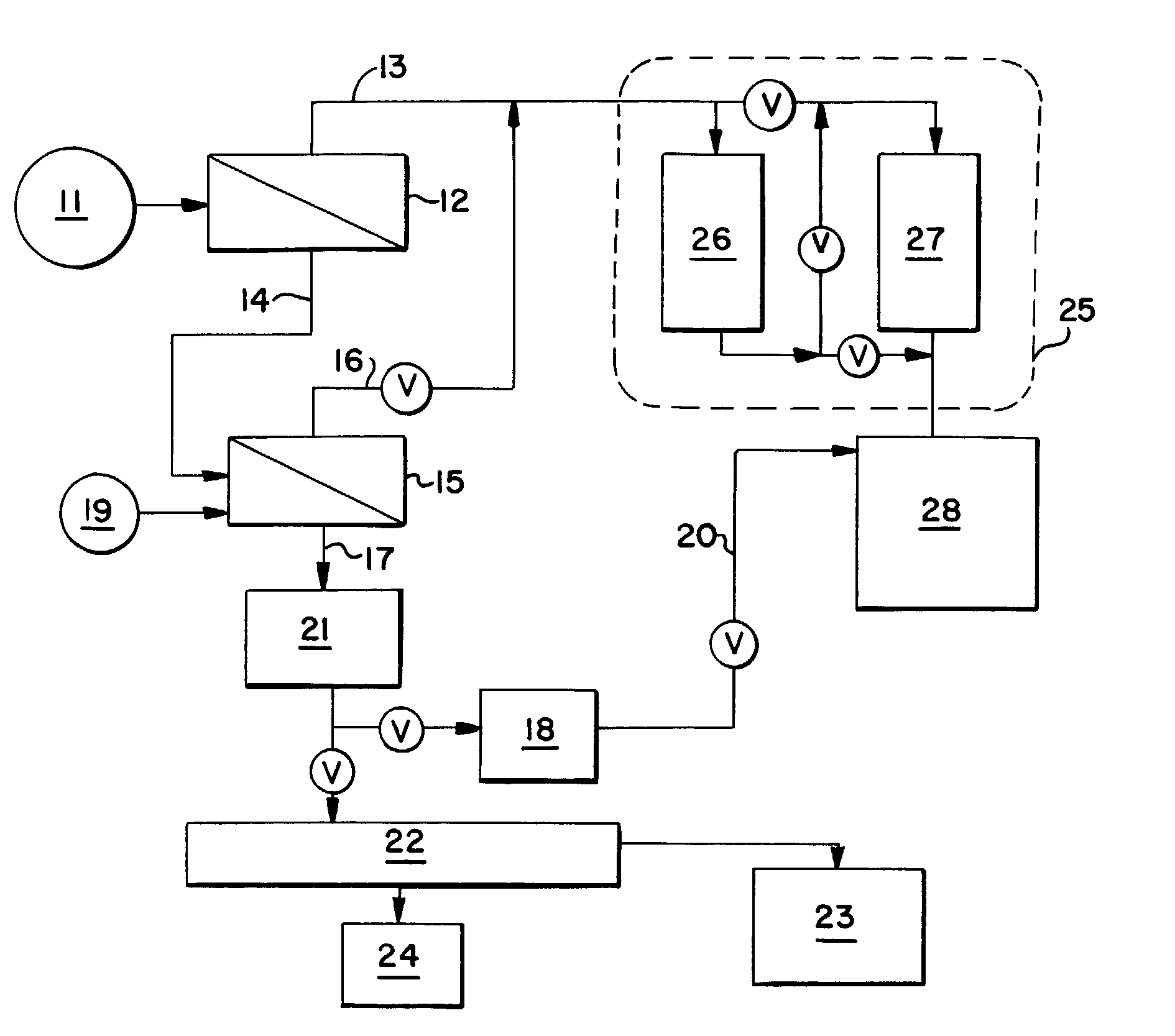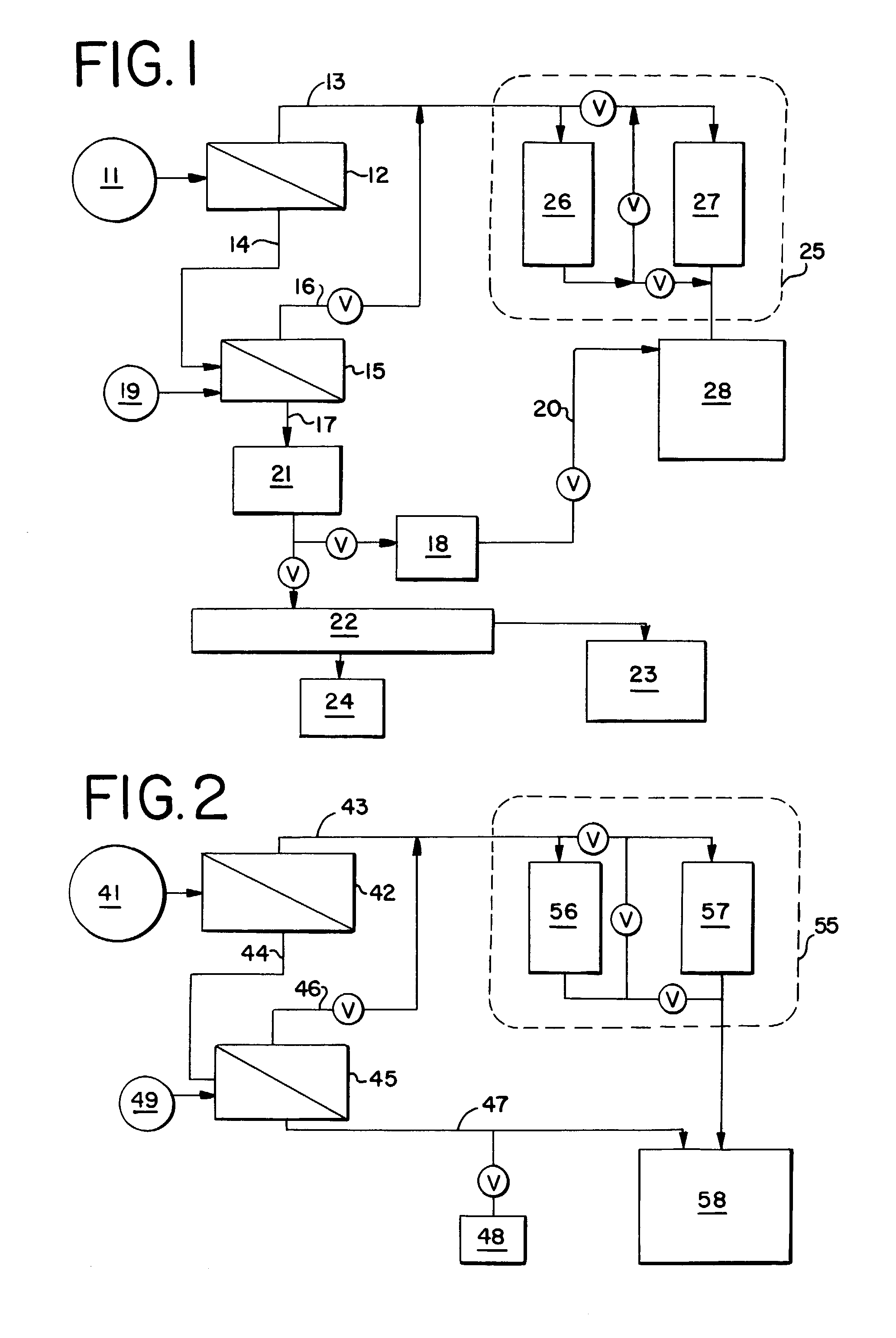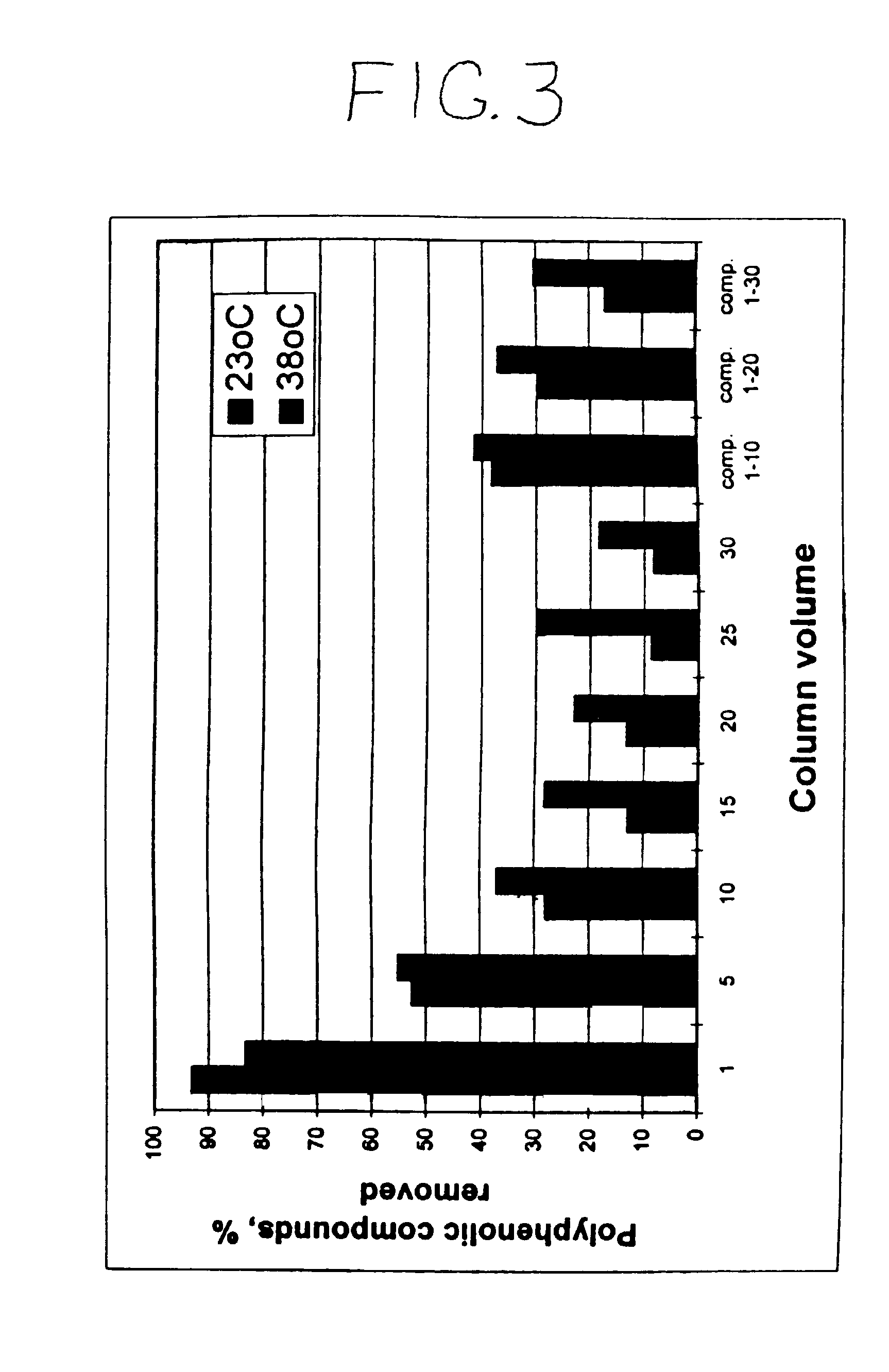Juice processing incorporating resin treatment
- Summary
- Abstract
- Description
- Claims
- Application Information
AI Technical Summary
Benefits of technology
Problems solved by technology
Method used
Image
Examples
example 1
[0049]Reconstituted grapefruit juice (Brix 10.0°) was passed through a hollow fiber micro-filtration unit. In order to debitter the juice product flow, the permeate therefrom was passed through a Koch debittering resin column. During debittering, adsorption of naringin and other adsorbable grapefruit juice components onto the surface area of the resin material of the commercial unit was carried out using AMBERLITE® XAD-16 resin. The original naringin level was 735 ppm, and the juice permeate was debittered to a naringin level of about 120 ppm.
example 2
[0050]Orange peel cups collected from a juice extraction process were shredded into pieces ranging in size between approximately 3 / 16 inch and ¾ inch. The shredded peel was contacted with water for 15 to 30 minutes at a peel-to-water ratio on the order of 1:1.
[0051]The resulting slurry was pressed to remove the peel solids from the juice. The thus prepared fresh peel juice was at a Brix level of between 4° and 8°. The juice phase was centrifuged and pasteurized, followed by membrane filtration in order to clarify the juice.
[0052]The clarified juice was passed through a column of AMBERLITE® XAD-16 adsorbent resin system. The resin system removed flavonoids, phenolic compounds and bitter limonoids. The thus clarified juice had improved flavor characteristics.
example 3
[0053]A run was made which utilized a Niro separation skid with two Koch Super-Core modules. Permeate therefrom is of lowered solids content so some suitably flows through an adsorption resin debittering column in order to remove compounds which are undesirable due to off-flavor attributes by which they are identified or which are characteristic of reactants thereof.
[0054]Cross-flow filtration of grapefruit juice was used in the removal of solubilized naringin from the retentate. Diafiltration was practiced in this run. Before making the first diafiltration water addition, the retentate was concentrated by initiating the cross-flow without water addition, the water reduction being from about 220 pounds to about 110 pounds, the reduction designating the amount of water removed during this initial concentration step. Thereafter, the 110 pounds of concentrated feed retentate were washed with 110 pounds of water at about 120° F. (48.9° C.), followed by a second wash of 110 pounds, and t...
PUM
 Login to View More
Login to View More Abstract
Description
Claims
Application Information
 Login to View More
Login to View More - R&D
- Intellectual Property
- Life Sciences
- Materials
- Tech Scout
- Unparalleled Data Quality
- Higher Quality Content
- 60% Fewer Hallucinations
Browse by: Latest US Patents, China's latest patents, Technical Efficacy Thesaurus, Application Domain, Technology Topic, Popular Technical Reports.
© 2025 PatSnap. All rights reserved.Legal|Privacy policy|Modern Slavery Act Transparency Statement|Sitemap|About US| Contact US: help@patsnap.com



